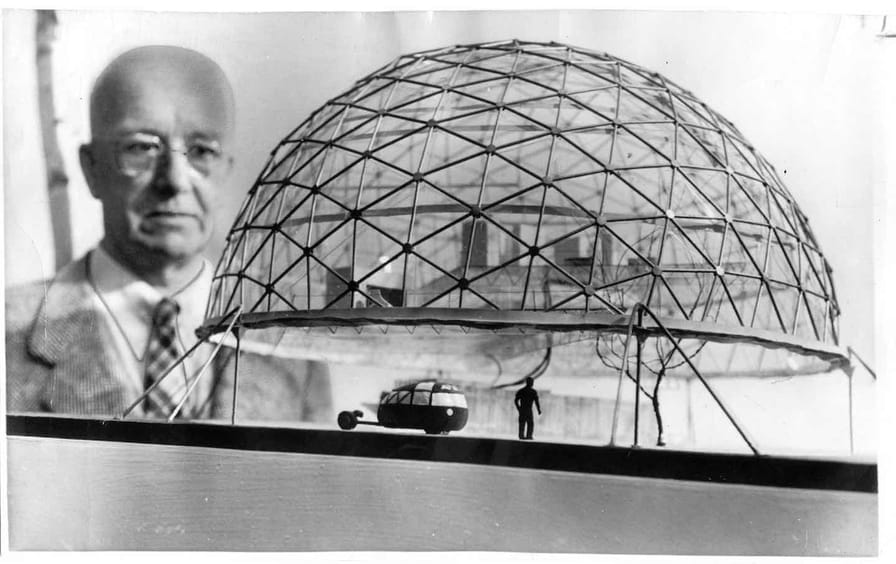
Across the St. Lawrence River from downtown Montreal, an ethereal and monumental sphere can be seen rising from the sloping topography of St. Helen’s Island. Originally completed as the US pavilion for the International and Universal Exposition held there in 1967, the design of this geodesic dome has been recognized for decades as the crowning achievement of R. Buckminster Fuller. The dome embodies several of the mathematical principles expounded by the architect and theorist during his lifetime. Its structure is based on the 20-sided icosahedron, an ancient geometric figure that Fuller obsessed over and derived from the close packing of spheres. Having built relatively few buildings during his career compared to architects of similar stature, Fuller established his reputation instead through lectures, publications, and academic studios. He was infamous for speaking hours on end and speculating well beyond building construction in his elaborate attempts to link the underlying patterns of society, technology, and nature. His more than 25 patents and multiple honors were only eclipsed by his status in popular culture: A January 1964 cover of Time depicted Fuller’s head as a geodesic structure surrounded by many of his futuristic inventions, with the article referring to him as the “greatest living genius of industrial-technical realization in building.”
BOOKS IN REVIEW
Fuller is the subject of a new biography by Alec Nevala-Lee, titled Inventor of the Future: The Visionary Life of Buckminster Fuller. It is the author’s second foray into biography, following 2018’s Astounding: John W. Campbell, Isaac Asimov, Robert A. Heinlein, L. Ron Hubbard, and the Golden Age of Science Fiction. The new book is a natural extension of Nevala-Lee’s interest in 20th-century science fiction and aims for an unsentimental treatment of a lauded intellectual’s life that underscores the potential complications to Fuller’s legacy. As Inventor of the Future reveals, “Bucky” had a penchant for claiming sole authorship over projects within his orbit, even when they were largely realized through the diligent labor and intellectual rigor of others. Expo 67’s great dome turns out to be a perfect example: The project ruined Fuller’s relationship with the architect Peter Chermayeff, who claimed that while “it was a great privilege for all of us to do this magnificent project with” Fuller, “his monumental ego led him to over and over again beat his drum, distort the facts, take all the credit, and ignore many others who played major roles in the work.”
Continue reading review at Buckminster Fuller’s Hall of Mirrors
Source: Buckminster Fuller’s Hall of Mirrors











Recent Comments